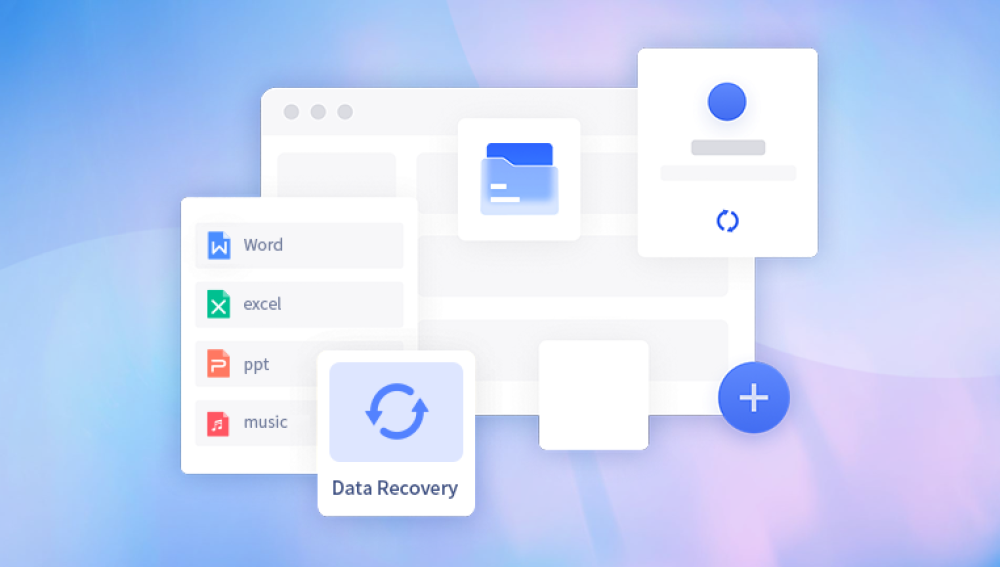Accidental deletion of data from a hard disk can be a distressing experience, especially when the files are important for work, school, or personal memories. Fortunately, data is not always permanently lost when deleted from a hard disk. With the right methods and tools, restoring deleted data is not only possible but often highly successful.
Chapter 1: Hard Disk Data Deletion
Before jumping into recovery, it is crucial to understand how data is stored and deleted on a hard disk.
1.1 How Data is Stored
Data on a hard disk is stored in sectors. Each file has a physical location, and when a file is deleted, the operating system typically removes the pointer to that file, marking the space as available but not immediately erasing the data.

1.2 What Happens When Data is Deleted
When you delete a file, it moves to the Recycle Bin (on Windows) or Trash (on macOS). Once the bin is emptied or files are deleted using Shift+Delete or from the command line, the space is marked free, but the data can still be retrieved until it is overwritten.
1.3 Common Causes of Data Deletion
Accidental deletion
Formatting the drive
System crashes
Power failures
Virus or malware attacks
Chapter 2: Immediate Steps After Data Deletion
Taking the right actions immediately after data loss increases the chances of recovery.
2.1 Stop Using the Drive
Avoid writing new data to the affected drive. New data may overwrite the deleted files, making them irretrievable.
2.2 Check Backup Sources
Look into recent backups. Cloud storage, external drives, and even email attachments might have copies of the deleted files.
2.3 Do Not Format or Partition
If your drive asks to be formatted, decline the prompt. Formatting can overwrite deleted data.
Chapter 3: Using File Recovery Software
File recovery software is the most accessible and effective way to restore deleted data from a hard disk.
3.1 Choosing the Right Tool
Drecov Data Recovery
Drecov Data Recovery is a reliable and user-friendly software designed to help users recover lost, deleted, or corrupted files from a wide variety of storage devices. Whether your data loss was due to accidental deletion, formatting errors, system crashes, virus attacks, or corrupted drives, Drecov Data Recovery offers a practical and effective solution for retrieving important files such as documents, photos, videos, and more.
What sets Drecov Data Recovery apart is its simplicity combined with robust performance. The interface is clean and intuitive, making it accessible even to those without technical experience. Users simply need to launch the software, select the storage device in question (hard disk, USB flash drive, SD card, or external drive), and initiate a quick or deep scan depending on the severity of the data loss. Once the scan is complete, users can preview recoverable files before restoring them, ensuring they recover exactly what they need.
3.2 Installing and Running Recovery Software
Install on a different drive – Never install the software on the drive from which you want to recover data.
Select the drive – Choose the affected hard disk.
Scan for deleted files – Use a quick scan first. If needed, run a deep scan.
Preview and restore – Most tools allow previewing recoverable files before restoring them.
3.3 Pros and Cons of File Recovery Software
Pros:
Easy to use
No technical expertise needed
Effective for most cases
Cons:
May not work if data is overwritten
Some tools are expensive
Chapter 4: Restoring Data from Backups
If you regularly back up your data, recovery becomes significantly easier.
4.1 Windows Backup and Restore
Go to Control Panel > System and Security > Backup and Restore
Select "Restore my files"
4.2 macOS Time Machine
Open Time Machine from the menu bar
Navigate to the date before deletion
Select and restore the files
4.3 Cloud Services
Log into your cloud service account (Google Drive, Dropbox, OneDrive, etc.)
Check the trash or version history
4.4 External Backup Devices
Use your backup drive
Restore files using backup software or manual copy-paste
Chapter 5: Professional Data Recovery Services
When software fails, or the hard disk is physically damaged, consider professional services.
5.1 When to Choose Professionals
The hard disk is making strange noises
The drive is not recognized
Data is extremely valuable
5.2 What to Expect
Evaluation of the drive
Cost estimate
Recovery timeline
5.3 Trusted Providers
DriveSavers
Ontrack
Secure Data Recovery
Local IT support companies
5.4 Cost and Risks
Can range from $100 to $2000
No guarantee of 100% recovery
Ensure your provider has good reviews and a no-data, no-fee policy
Chapter 6: Manual Recovery Methods for Advanced Users
For those with technical expertise, there are manual methods.
6.1 Using Command Prompt (Windows)
Open Command Prompt as Admin
Use chkdsk and attrib commands to try and recover deleted files
6.2 Linux-Based Tools
TestDisk – Helps recover lost partitions and make non-booting disks bootable again
ddrescue – Useful for copying data from failing disks
6.3 Hex Editors
Can be used to manually search for data signatures and reconstruct files
Not recommended for beginners
Chapter 7: Preventing Future Data Loss
Prevention is always better than cure.
7.1 Backup Regularly
Use both local and cloud backups
Automate backup processes
7.2 Use Antivirus Software
Keep your system protected from malware and ransomware
7.3 Avoid Overwriting
Be careful when deleting or moving files
Educate users about data handling best practices
7.4 Monitor Disk Health
Use tools like CrystalDiskInfo (Windows) or SMART Utility (Mac) to check drive health
Chapter 8: Drecov Data Recovery – A Featured Solution
Drecov Data Recovery is an all-in-one tool for users looking to recover data easily and effectively. It supports a wide range of file types and storage media and features a clean, intuitive interface suitable for both novices and experts.
Key Features:
Quick and deep scanning modes
File preview before recovery
Recovery from formatted, corrupted, or deleted partitions
Works with HDDs, SSDs, USBs, and SD cards
How to Use:
Download and install on a different drive
Launch the tool and select the target drive
Choose scan type (quick/deep)
Preview and recover files
Restoring deleted data from a hard disk is achievable with the right approach. Whether you opt for recovery software, backups, or professional services, timely action is crucial. Always stop using the affected drive immediately after data loss, and consider implementing robust backup and security strategies to prevent future incidents. Tools like Drecov Data Recovery simplify the process, making it possible for even non-technical users to recover lost data efficiently. With this comprehensive guide, you’re equipped to handle hard disk data loss with confidence and clarity.




